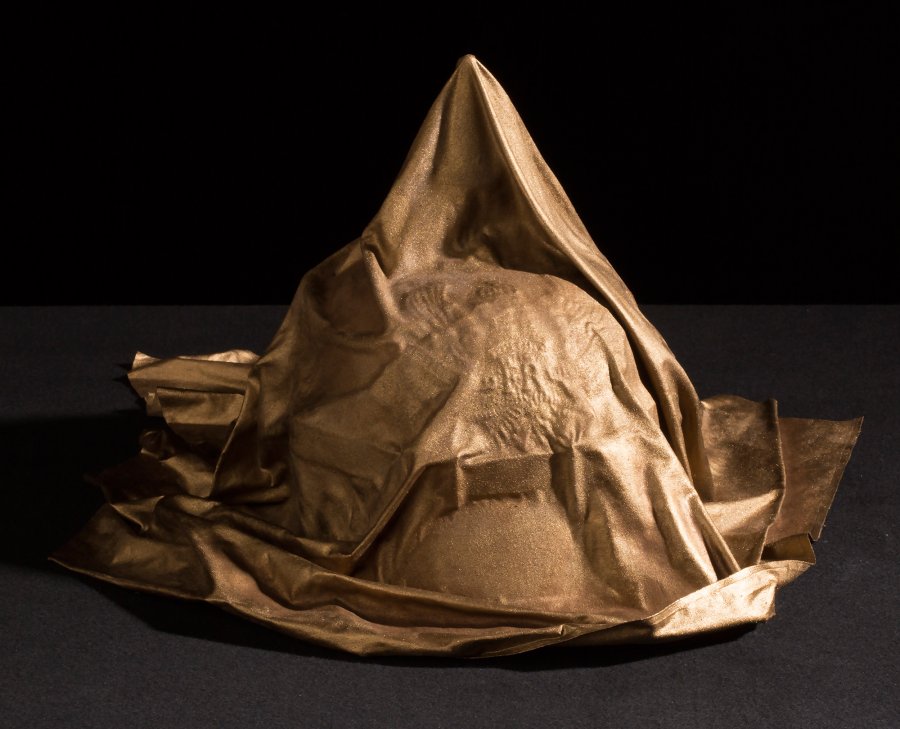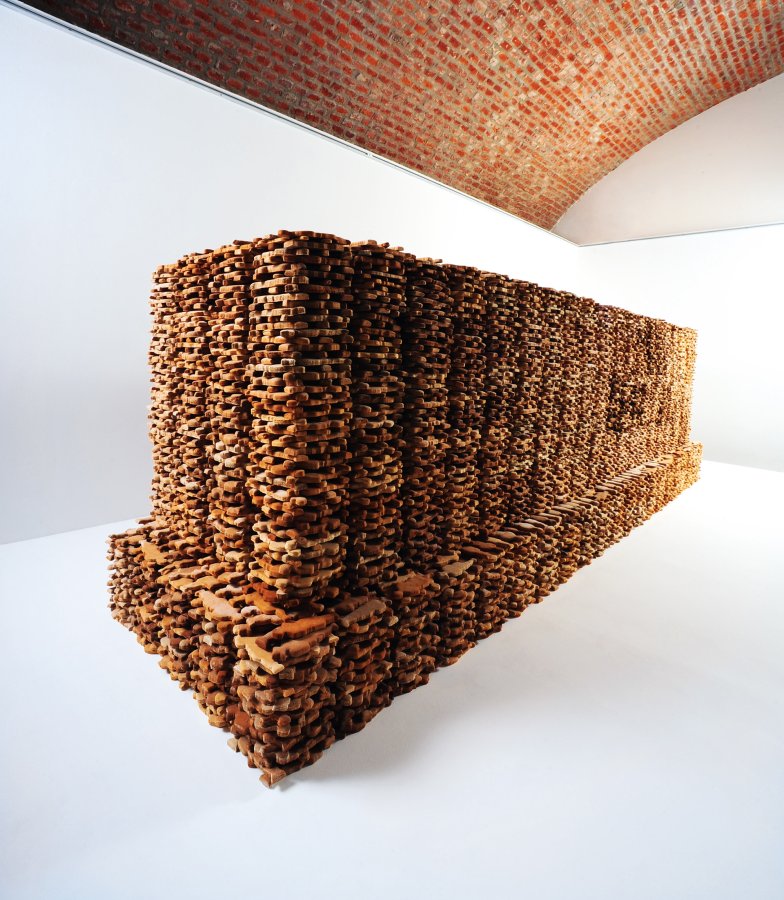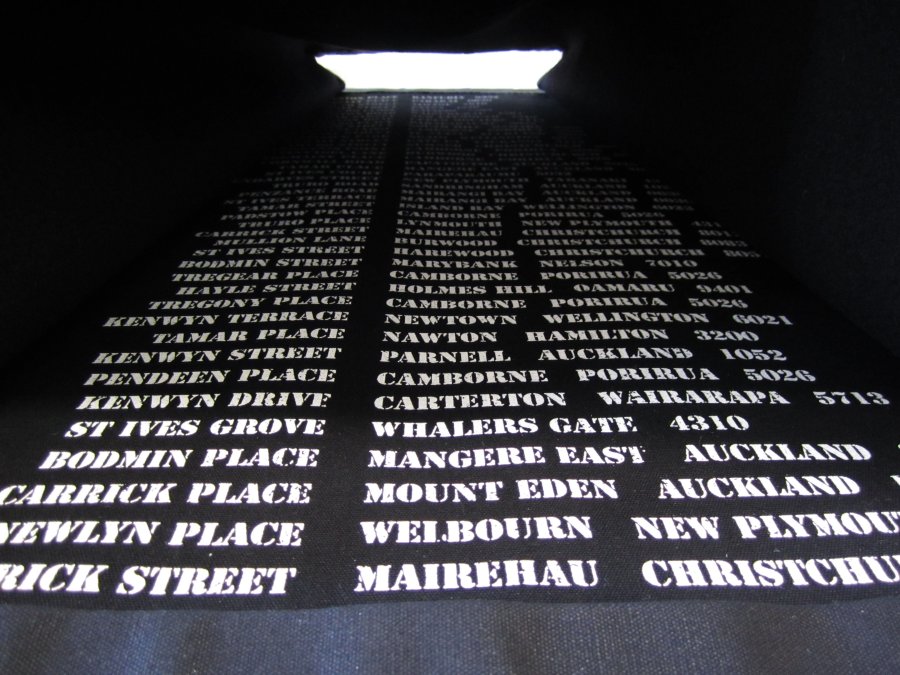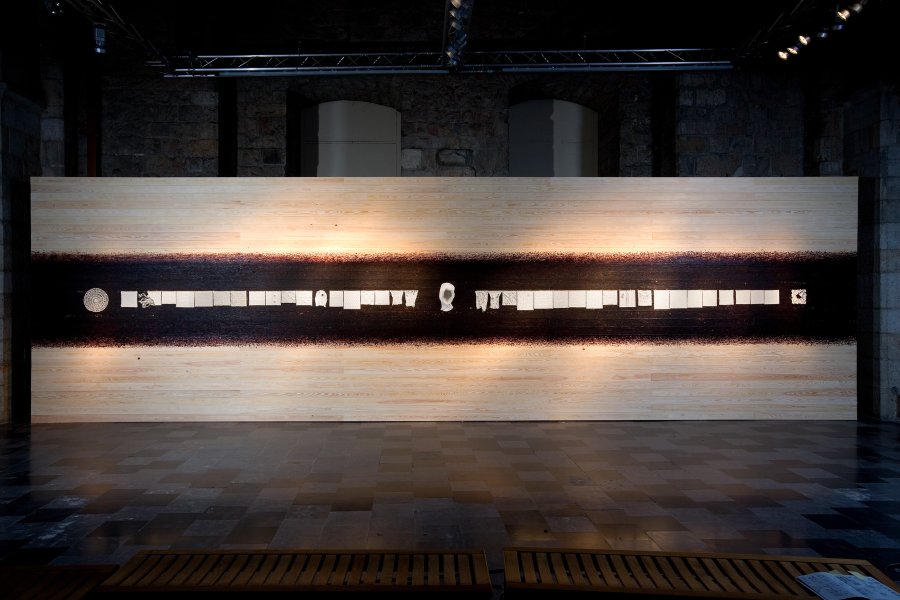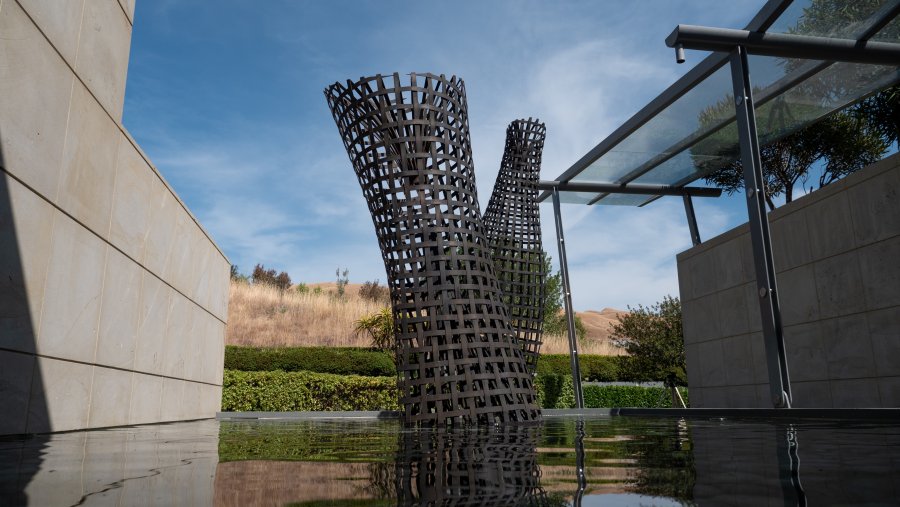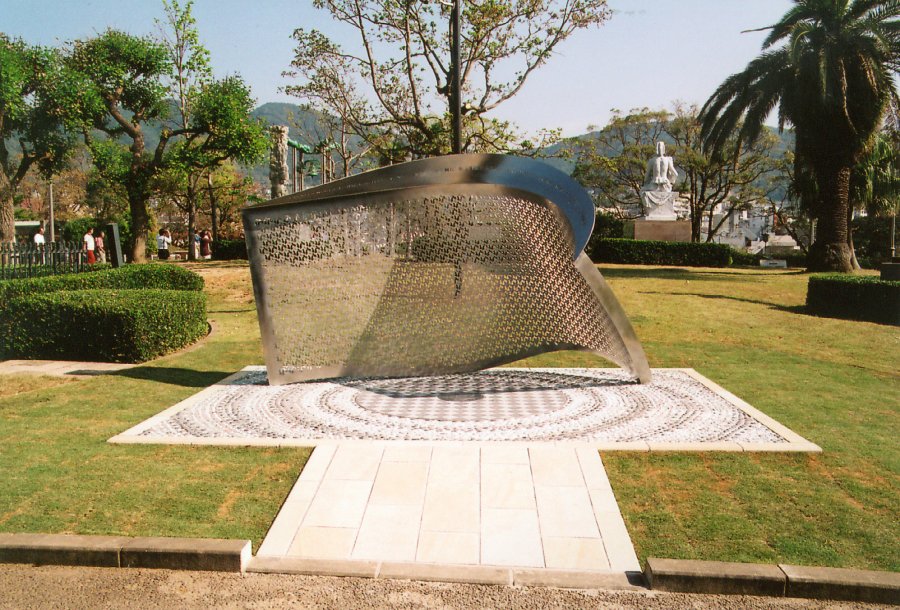Stela
Militärhistorisches Museum der Bundeswehr
Dresden
Germany
2014
Stela was inspired by commemorative forms in Langemark German military cemetery in Belgium, that list the identified and unidentified dead buried in a mass grave. The names of so many of the dead are listed that, from a distance, they appear as a texture. Even up close the names of individuals and their dates of death seem to join both horizontally and vertically with those of their comrades, denying their individuality and affirming their collective being.
Stela consisted of layers of Anzac recipe biscuits in the outline shapes of First World War soldiers. The temporary sculpture brings together the war losses of combative nations in a common remembrance form as a gesture of historical reconciliation and recognition of mutual loss. Visitors to the museum were invited to take 'soldier' biscuits from Stela and eat them, thus ingesting the memory of soldiers and drawing attention to the contemporary and historical 'consumption' of the armed services and our societies' responsibility in the decision to send them to war. This erosion of the sculpture was also a reference to the frailty of both memory and the meaning residing in memorial forms.
The 18,000 biscuits were stacked around a stainless steel 'cenotaph' form patterned with oak leaves which was again revealed as museum visitors consumed the biscuits.
Collection: Militärhistorisches Museum der Bundeswehr, Dresden, Germany
Cenotaph manufactured by E. Göhlert GmbH & Co.KG and biscuits by Akademie Deutsches Bäckerhandwerk Sachsen

Cenotaph. Photo: David Brandt
Video: ‘Dedication’ of Stela, 12 July 2014

Cenotaph (oak and kawakawa leaf pattern). Photo: David Brandt

Stela. Photo: Kingsley Baird

Stela (detail: Cenotaph lid and biscuits). Photo: Kingsley Baird

Stela exhibition poster

Militärhistorisches Museum der Bundeswehr, Dresden, Germany
